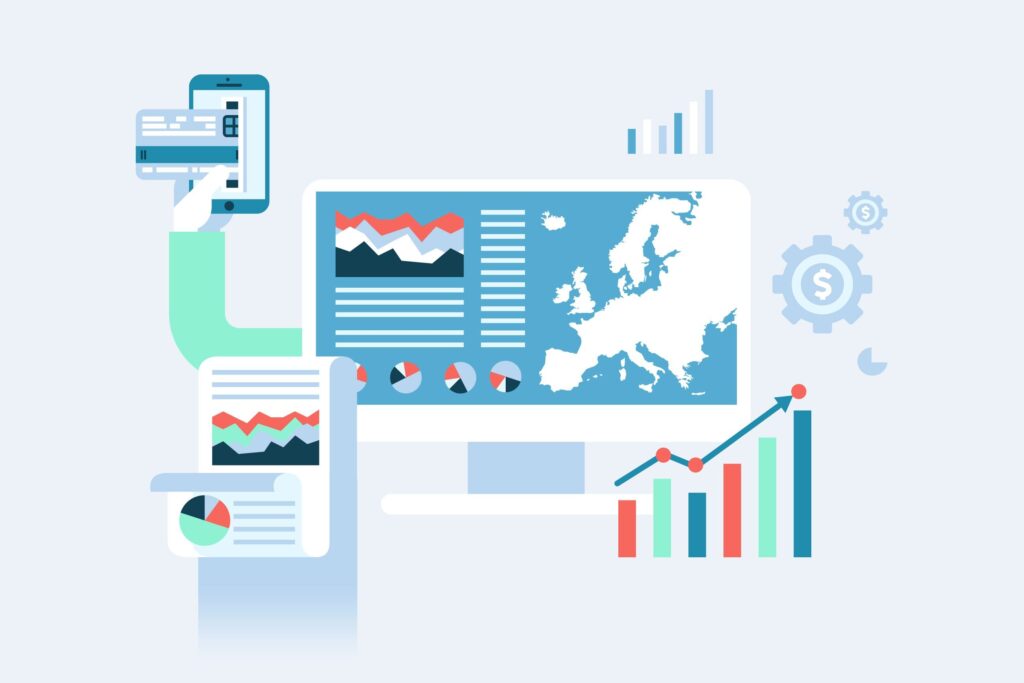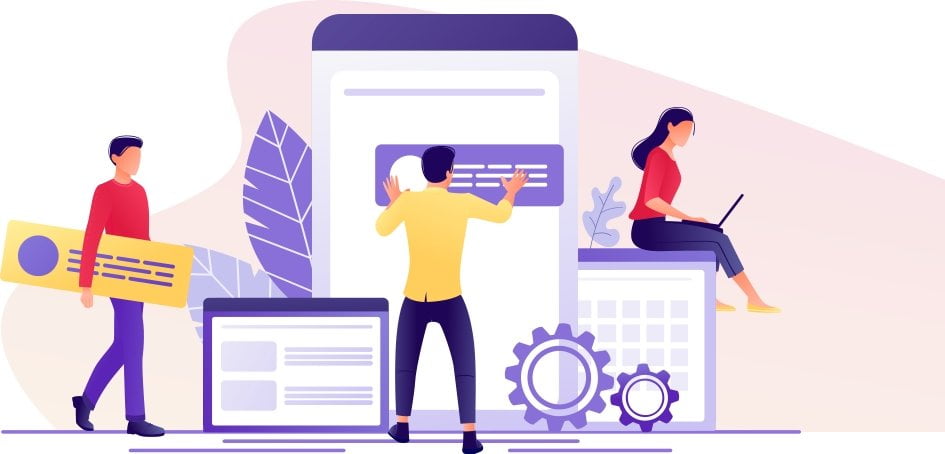There are more than 5.13 billion unique mobile phone users in the world today. Considering that number, there is surely a strong appetite for automation due to mobile solutions for almost everything. Going to the mall, the bank or the library is not imperative anymore. Moreover, this is the perfect time for Fintech companies to develop an app since VC investment in fintech reached $52.3 billion in 2021 compared to $22.5 billion invested in 2020.
A smart approach to fintech app development includes creating an interactive prototype to assumptions with real users and inv coding features that make sense for the target audience. In this blog, we discuss the current trends in the Fintech world and then take you through a detailed step-by-step process of building a Fintech app in record time.
Current Trends in the Fintech market
Fintech funding dropped to 2017 levels as investors pulled back amid the pandemic. On average, Google Play Store adds more than 1300 apps to it every day; simultaneously, the pandemic has given momentum to several fintech areas, such as contactless payments and branchless banking.

On the other hand, E-commerce has been on the rise, as businesses closed stores and consumers got under stay-at-home orders. As the world slowly surfaces after the pandemic, we can see the following fintech trends starting to shape:
- Digital platforms are essential for all financial services to cut costs and remove inefficiencies.
- Lending and related apps are likely to suffer the most.
- Robotics and advisory services are likely to gain more popularity.
Some of the major types of Fintech companies include wealth and investment apps, mobile payment apps, lending apps, individual finance apps, cryptocurrency apps, and neo banks. Since the last decade, Cash App, PayPal, Venmo, US Debt Clock, Org, Credit Karma, Daily TSP are some of the most popular fintech and banking apps.
Steps to building apps for fintech companies
As an overview, some of the major steps that we take while building an app for Fintech companies in record time are as follows.
- Designing wireframes — what the app will look like.
- Putting together the right prototype using the wireframes
- Testing the prototype with potential users
- Applying user feedback to the prototype
- Designing the actual UI/UX
- Verifying the prototype with a potential user base
- Developing the back end of the application
- Testing stages and more feedback
- Making the app live

Also, while we are at it, these are some of the major functions of a Fintech app that we care the most about:
- User authentication with encryption
- Secure hosting with failover redundancy
- Checking credit score
- Access to real-time bank transfers.
- Secure payment gateway of your app
- Chat to communicate with users
1. Manage users of Fintech companies:
Think of this as the blueprint of your app. It is the school of choice for app development. It also provides secure user authentication and crash reporting.
2. Integrate credit score checkups:
While building a fintech app, we offer a consumer-facing API that pulls credit scores and related reports. With ACS (American Credit Systems), you may generate full credit reports, FICO scores, public records and make credit inquiries.
3. Access bank accounts:
A single API should connect your app to bank accounts. It consolidates your users’ financial data on a single platform, minimizing risk and speeding up development.
4. Setup your payment gateways:
For securing your payment gateways, we make sure to use a global payment processor. They combine many payment service providers into one solution that frees you from storing credit card details and complying with PCI certification.
5. Implement customer support at multiple levels:
Using Natural Language Processing and ML, Chatbot’s API automates your customer experience. Since ML powers this, you develop it to handle more complex tasks like pre-approval processing using open source libraries.
6. Add bonus plugins:
If data visualization is an essential feature for your app, D3 is the framework. To understand better, D3.js is a JavaScript library for manipulating data to create HTML, SVG, and CSS visualizations if you include enterprise resource planning, budgeting, or just looking to make a visual representation of the financial data.

7. Consider the legal obligations
Your user’s data is sensitive and must be kept safe at all times. Here are some additional steps you need to take:
- Understand the legal aspects of accessing users’ financial data
- Create a data privacy policy
- Secure an insurance policy in case of any breaches
- Have a disaster recovery and a continuity plan
In all, the success of a fintech app depends on the users- the amount of trust they put in your app, along with the experience they get. Taking extra steps will go a long way to enhance their confidence in you and the reliability of your app. For any further consultation or requests on building a fintech app, please book a free consultation session with our experts today.



